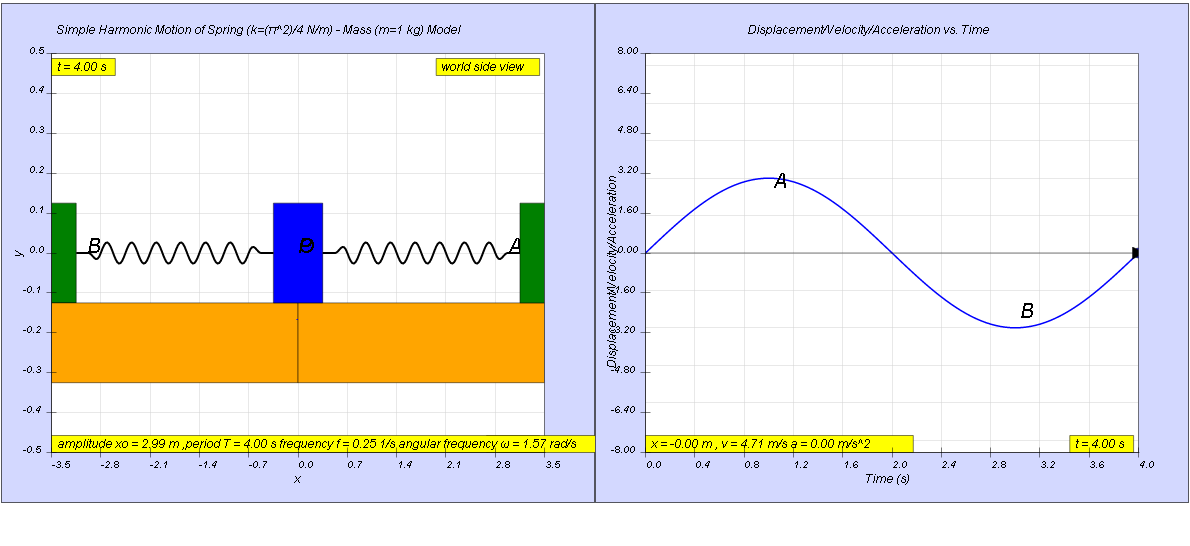
A body undergoes a simple harmonic motion with amplitude 3.0 m and
period 4.00 s. Find the
a) angular frequency,
b) maximum speed,
c) maximum acceleration,
d) acceleration of the body when it is 1.0 m
from the equilibrium point, and
e) speed of the body when it is 1.0 m from the
equilibrium point.
[ 1.57 rad/s, 4.7 m/s , 7.4 m/s^2 , -2.5 m/s^2, 4.4 m/s ]

a) angular frequency , ω =
b) maximum speed, v0 = x0ω = (3.00)(1.57) = 0.047 m/s